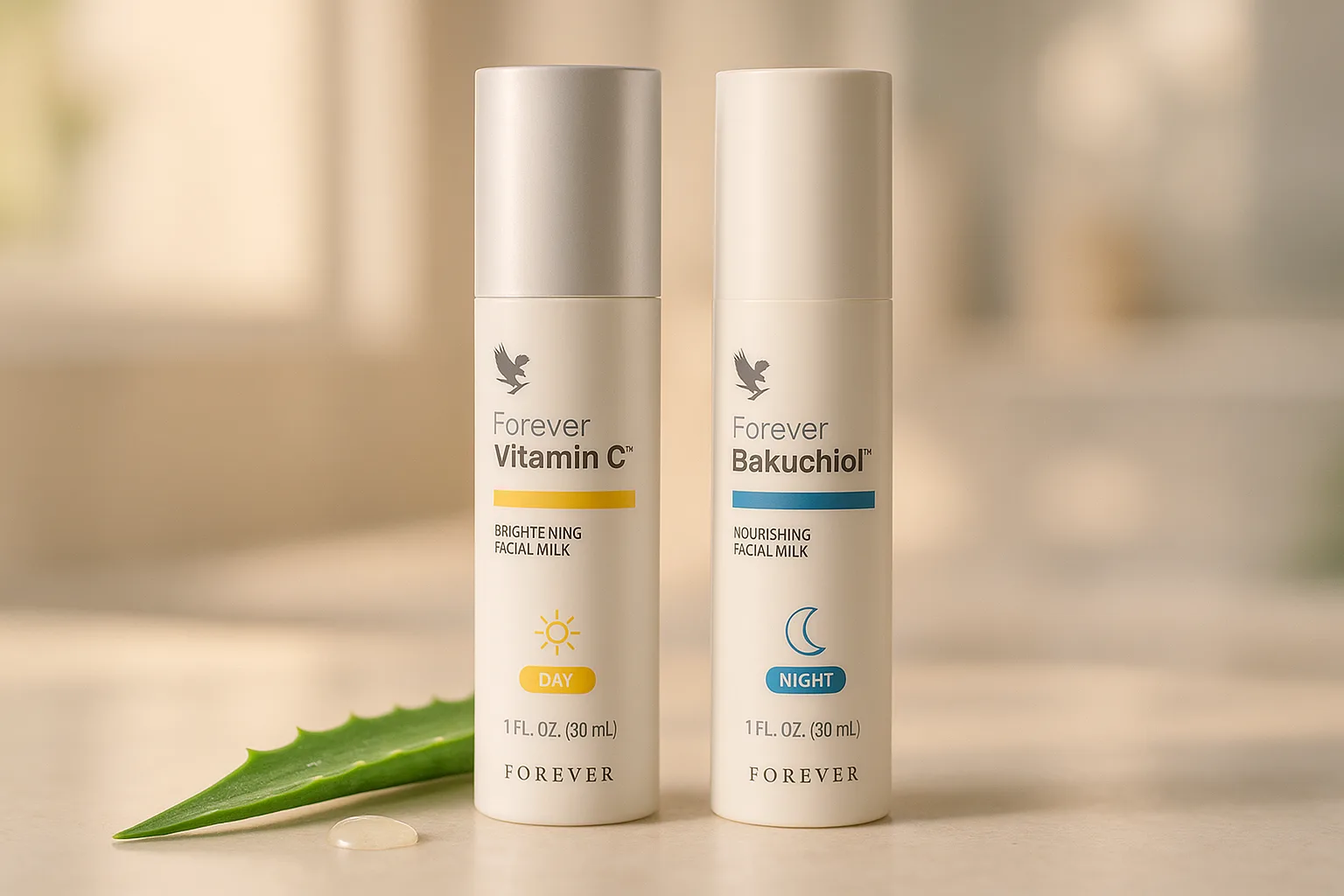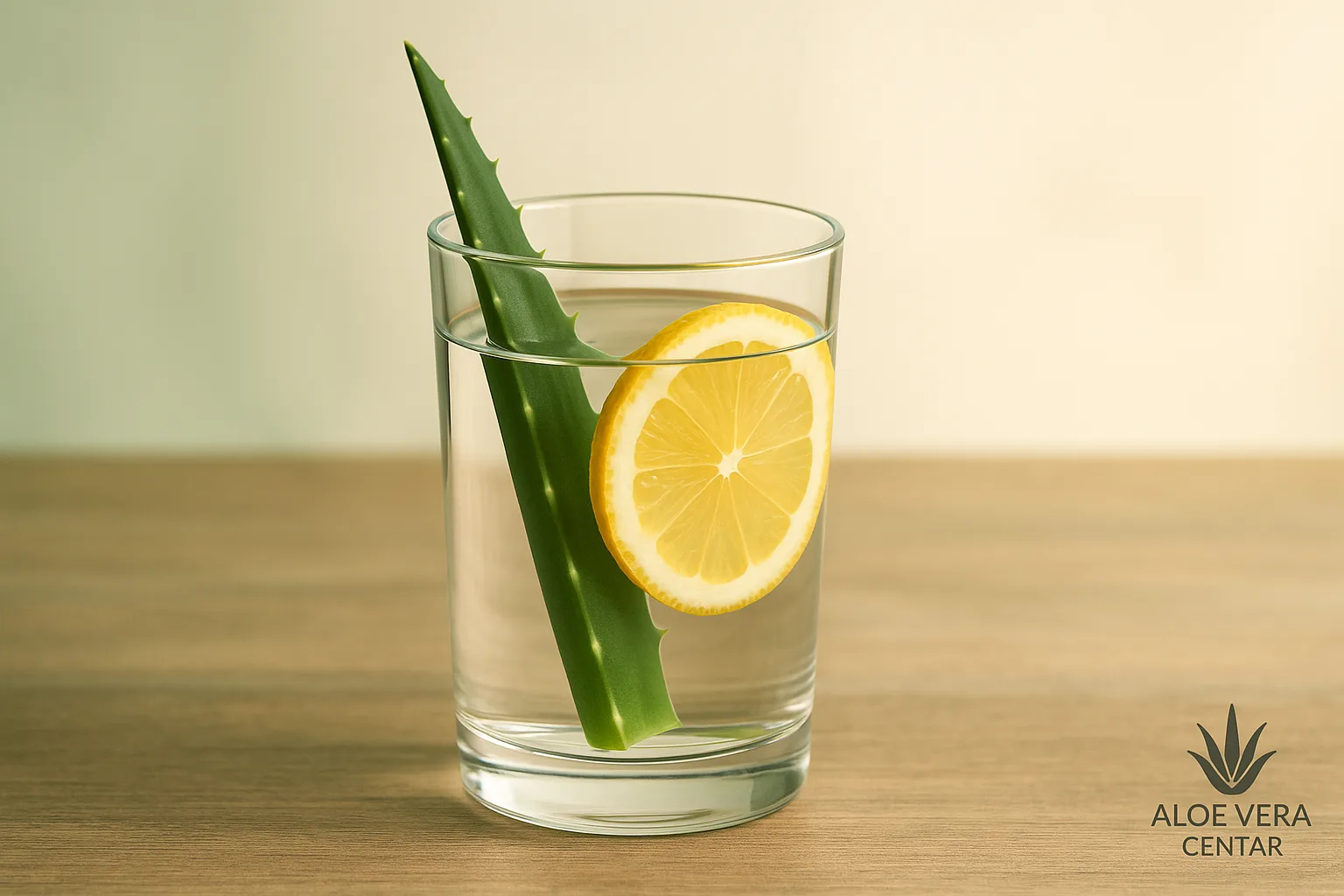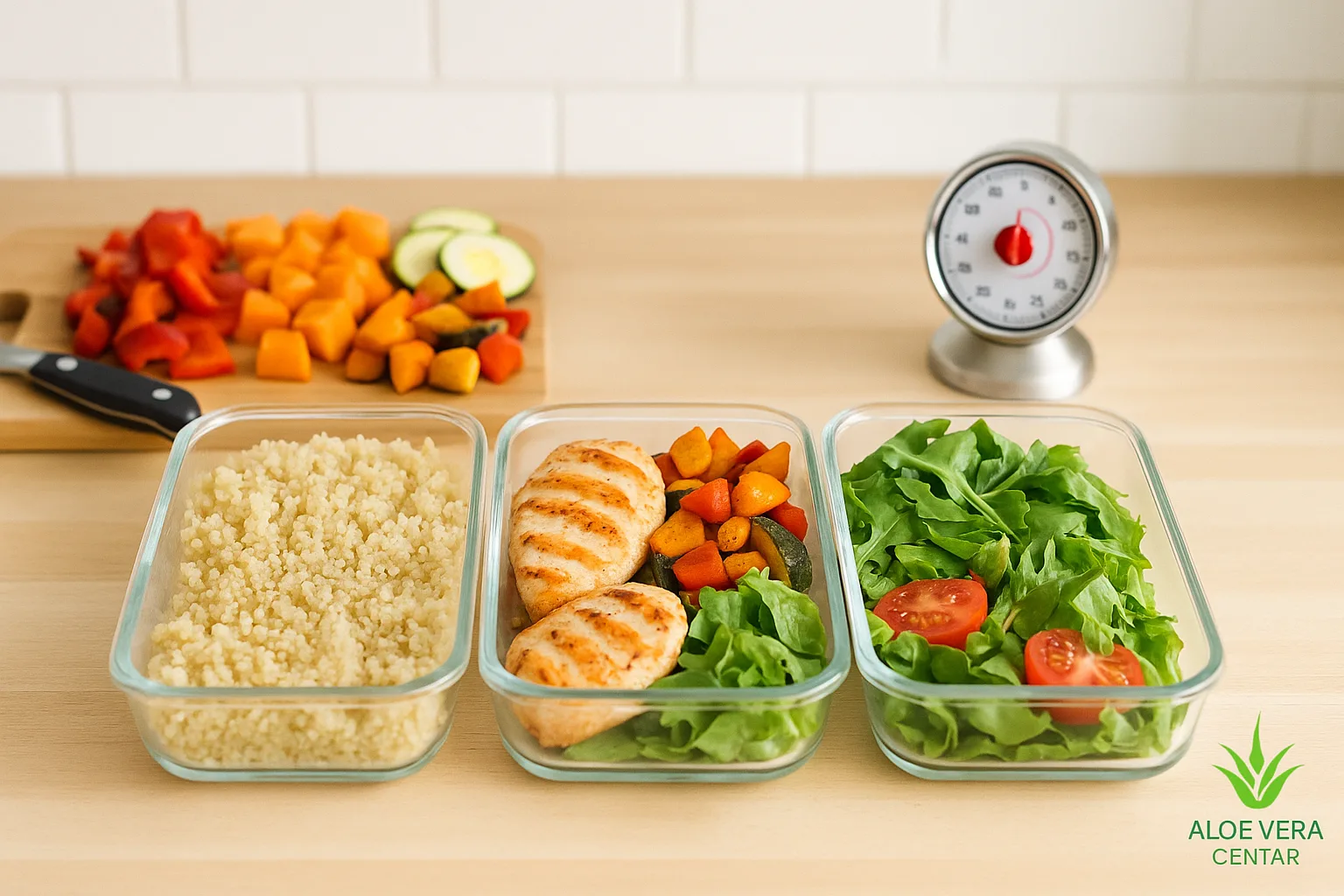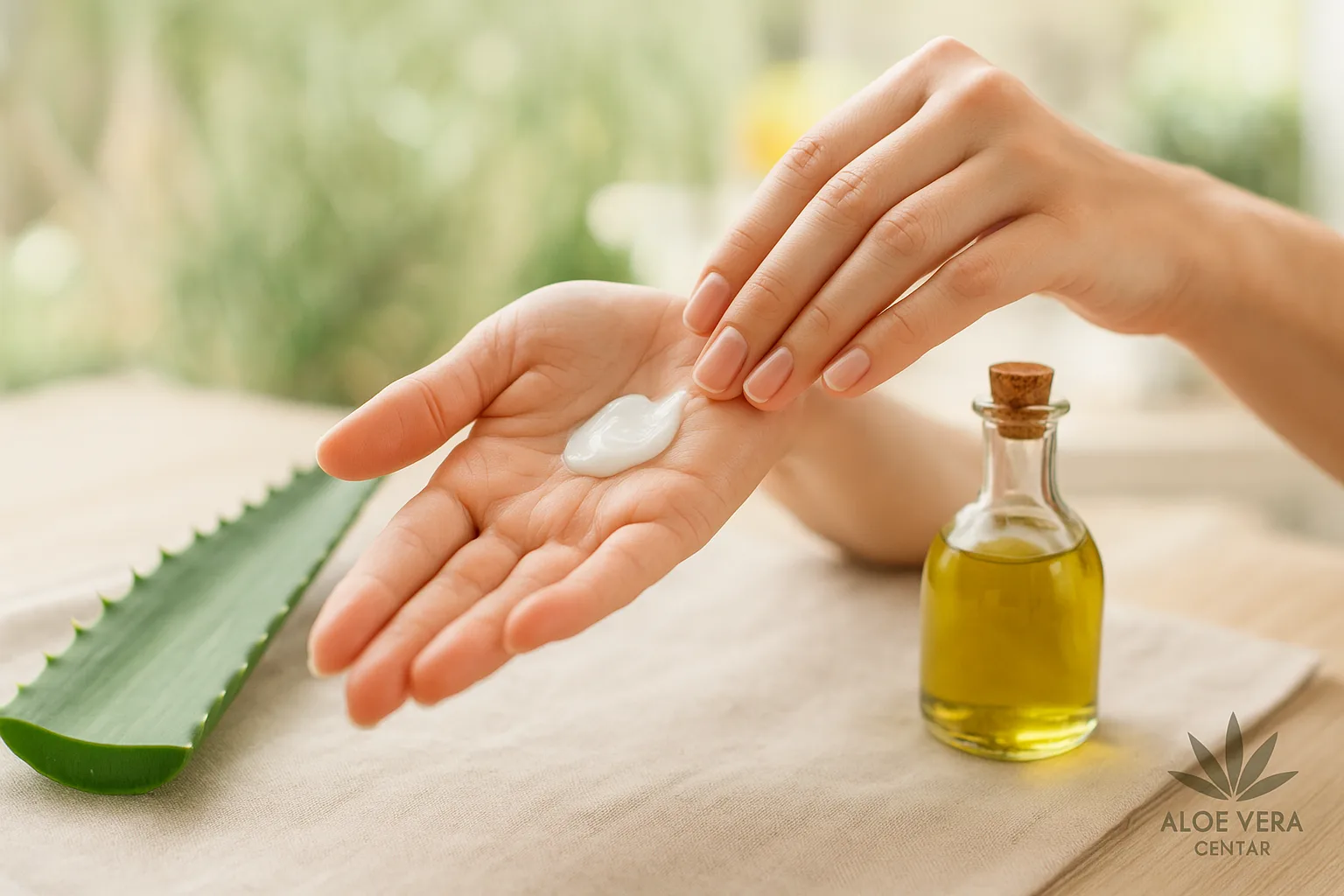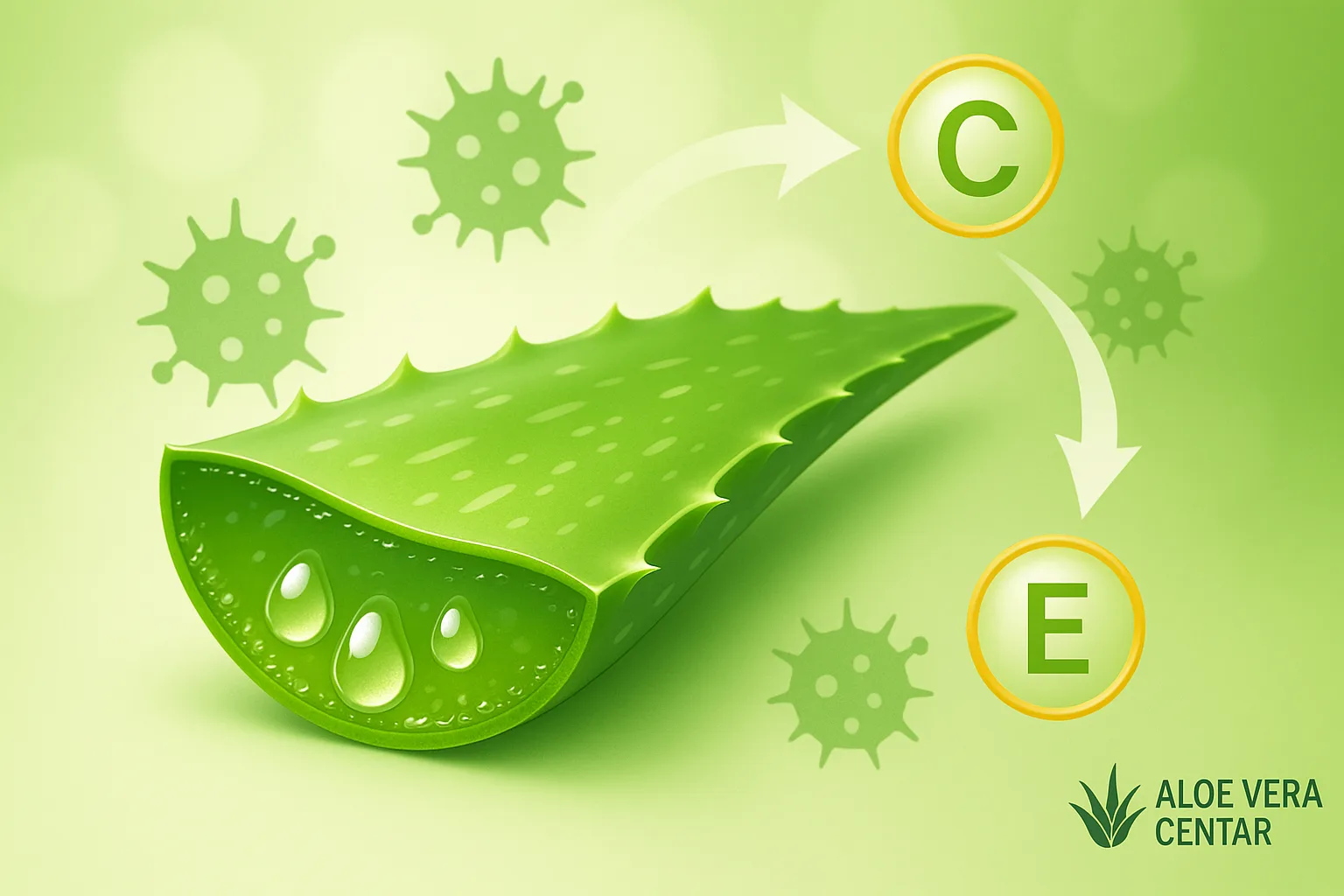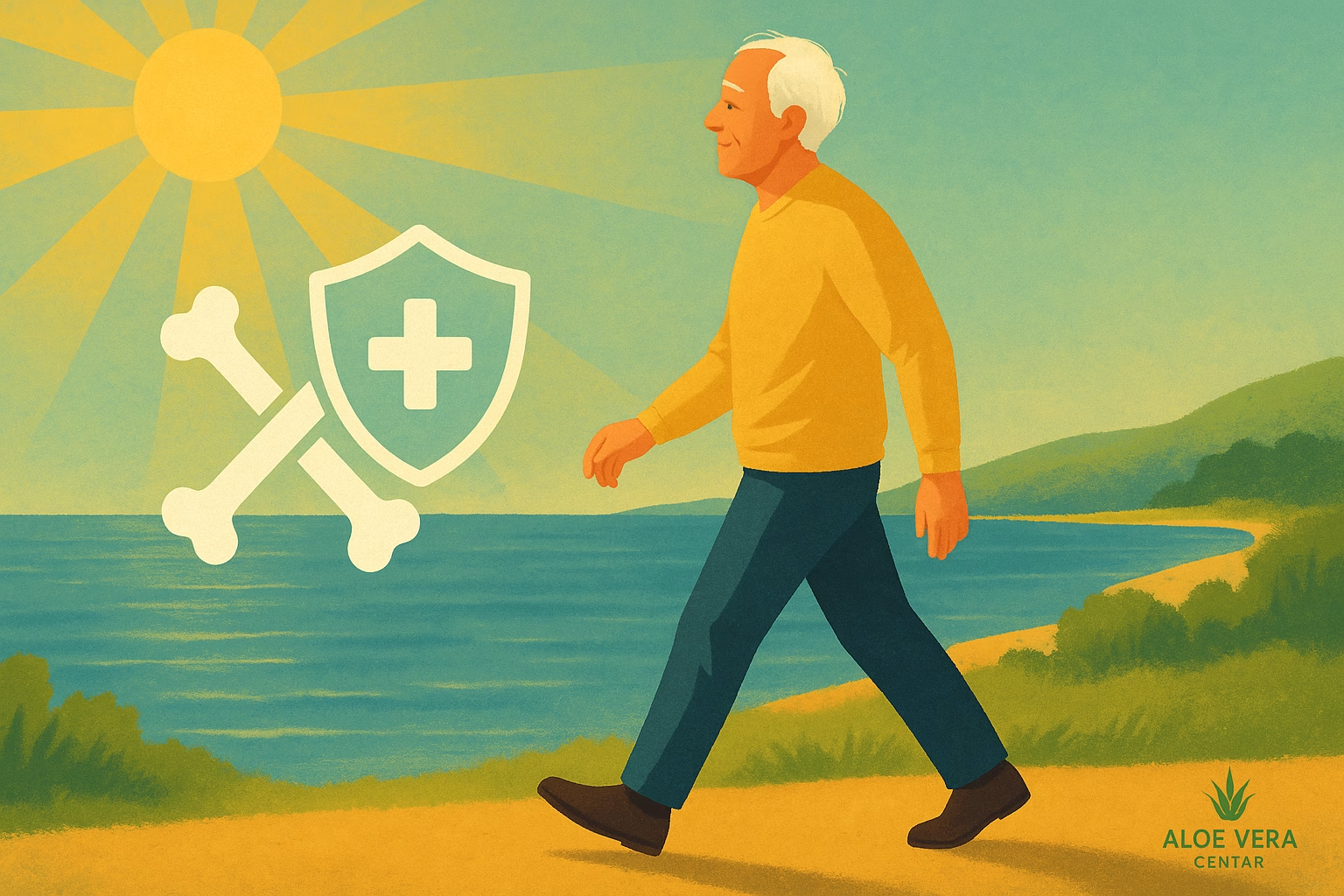
Vitamin D – Strong Bones, Better Immunity, and Positive Mood
Vitamin D: the Key to Healthy Bones, Strong Immunity, and Positive Mood
Vitamin D is much more than the “sunshine vitamin.” It acts as a hormone that orchestrates hundreds of bodily processes, from strong bones and elastic muscles to enhanced immunity and stable mood. Sounds too good to be true? Keep reading… In the next few minutes, you’ll get concrete advice on how to avoid deficiency, naturally increase vitamin D levels, and discover which symptoms require immediate attention.
What Exactly is Vitamin D?
Vitamin D is a group of fat-soluble compounds (D2 and D3) that our body produces when skin absorbs UVB rays or we get through diet and supplements. In the liver and kidneys, it converts to its active form – calcitriol – which enters every cell. According to an analysis published on PubMed, vitamin D deficiency is a global health problem affecting over a billion people.
Bone Strength: how Vitamin D and Calcium Work Together
Without vitamin D, the body cannot effectively absorb calcium from the intestines. The result? Fragile bones, frequent fractures, and osteoporosis. A study. showed that supplementation of 800 IU daily reduces hip fracture risk by 16%. If you’ve already read our guide on silicon for bones, hair, and nails, you know that minerals are team players. That’s why nutritionists favor the combination with Forever Calcium, tablets that contain calcium, magnesium, and just the right amount of vitamin D needed for optimal absorption – without excess.
Immunity on Steroids: Vitamin D as Defense Captain
Ever wonder why you catch colds more often in winter? The answer lies in weaker UVB spectrum and lower vitamin D levels, as confirmed in our article on boosting immunity. Calcitriol activates macrophages and T-lymphocytes, cells that first attack viruses and bacteria. People with optimal 25(OH)D levels have 54% lower risk of respiratory infections.
Mental Clarity: the Connection between Vitamin D and Serotonin
Nothing’s worse than winter brain fog… A 2023 study in the Journal of Affective Disorders found that subjects with vitamin D deficiency are twice as likely to develop depressive symptoms. The protein that converts tryptophan to serotonin depends on vitamin D, and serotonin directly affects feelings of happiness. If you’re prone to work stress, check out our guide on how to naturally maintain focus.
How much Vitamin D Do You Actually Need?
- Adults 30-55 years: 1,000-2,000 IU daily
- Pregnant and nursing women: 2,000-4,000 IU (under medical supervision)
- People with darker skin or excess weight: higher upper limit as skin produces less vitamin D
World endocrinology societies consider 75-125 nmol/L to be optimal. But that’s not all… Individual needs depend on genetics, microbiome, and fat intake. For an accurate assessment, use our AI advisor – it takes less than two minutes to get your personalized plan.
Best Sources of Vitamin D
1. Sunlight
Exposing face and arms on a clear day for 15 minutes around noon can produce up to 10,000 IU. Here’s the thing: sunscreen with SPF above 15 blocks over 90% of UVB rays, so brief exposure without protection (but without redness!) still makes sense.
2. Foods Rich in Vitamin D
- Eggs (yolk)
- Fatty fish (salmon, mackerel, sardines)
- Cod liver
- Fortified milk or plant-based drinks
3. Dietary Supplements
Sometimes sun and diet aren’t enough, especially in winter. When choosing a supplement, look for D3 (cholecalciferol) combined with fats for better absorption. It pairs excellently with Forever Arctic Sea Omega as omega-3 fatty acids have been proven to increase vitamin D bioavailability.
Alarming Signs of Vitamin D Deficiency
Are you often tired and experiencing muscle pain? This might be vitamin D deficiency. Other symptoms include:
- Frequent colds and infections
- Difficulty with wound healing
- Declining mood and irritability
- Bone mass loss or frequent fractures
If you recognize these symptoms, it’s ideal to get a 25(OH)D blood test. Most private labs offer results within 24 hours.
Strategy for Optimal Vitamin D Levels
- Get tested to know your starting point.
- Plan for sun exposure: include 15 minutes of daily walking in your schedule.
- Combine food and supplements: include fish twice weekly, eggs every other day, and a 1,000 IU D3 dose.
- Add calcium and omega-3 whenever possible.
- Winter reminder: increase dosage or frequency of check-ups.
Looking for a simple package with a discount? We’ve secured 15% off for special Aloe Vera Center readers on the combination of vitamin D, calcium, and omega-3 – no coupon needed, discount applies at checkout.
Can Aloe Vera Help with Absorption?
Aloe vera’s active compounds, especially acemannan, improve intestinal mucosa and thus indirectly help with micronutrient absorption. If you’re interested in learning more, see how aloe vera gel promotes healthy digestion and helps balance the microbiome.
Synergy of Vitamin D with other Nutrients
Vitamin K2 directs calcium to bones, magnesium activates enzymes for vitamin D conversion, and omega-3 protects immune system cell membranes. In practice, this means a comprehensive approach brings faster results. For details about omega benefits, check out our article on omega-3 fatty acids.
How to Track Progress?
Ideally, repeat testing every 3-6 months. Benefits of monitoring:
- Quickly notice level drops and adjust dosage
- Save money by not taking supplements blindly
- Reduce toxicity risk (above 250 nmol/L)
Having your annual check-up? Take advantage of the test opportunity and immediately enter the result in the AI advisor for a new assessment.
Frequently Asked Questions
What if I Can’t Tolerate Cod Liver Oil Capsules?
A great alternative is spray or chewable tablets with cholecalciferol. It’s important to take vitamin D with some fat for absorption.
Can I Overdose on Vitamin D?
It’s difficult, but not impossible. Daily doses above 10,000 IU for months can increase blood calcium and cause nausea. Stick to recommendations or monitor blood levels.
Are Sun Lamps Effective?
UVB lamps can help, but they must be medically certified. Always follow manufacturer instructions to avoid skin damage.
Is a Level of 50 Nmol/L Sufficient?
Minimally yes, but modern research suggests 75-125 nmol/L is optimal for bones and immunity.
Conclusion: Time to Shine at your Full Potential
Vitamin D isn’t a placebo. It’s a powerful modulator of bone metabolism, immunity, and mood. Take control: spend 15 minutes in the sun, enrich your diet with fatty fish, test at least once a year, and consider quality supplements like Forever Calcium or Forever Arctic Sea Omega. You can make small changes today that create big results. Have questions? Feel free to write to us or try the intelligent AI advisor. And if you want to use the 15% discount on your first order, click while the offer is active.
Related Readings and Additional Support
For an even more detailed look at micronutrient connections, read the guide on calcium and vitamin D, which explains how these two nutrients work together to strengthen bones and teeth.
If you’re looking for practical supplementation, check out Forever Absorbent-C, a supplement that combines vitamin C with fiber and is often used in combination with vitamin D for immune support and better absorption.
By combining vitamin D with calcium, vitamin C, and omega-3 fatty acids, you build a strong foundation for bone health, stronger immunity, and more stable mood throughout the year.
Note: This article is for educational purposes only and is not a substitute for professional medical advice. For individual recommendations, consult your doctor or pharmacist.

